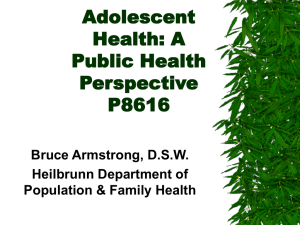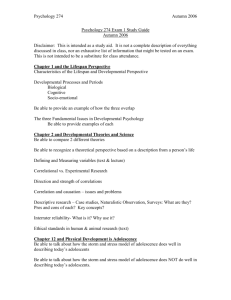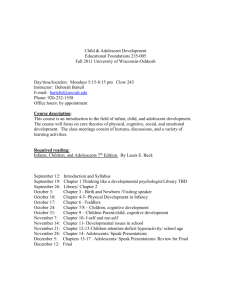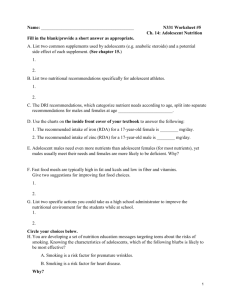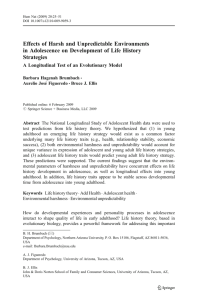Adolescent Development: Stages, Theories, and Transitions
advertisement
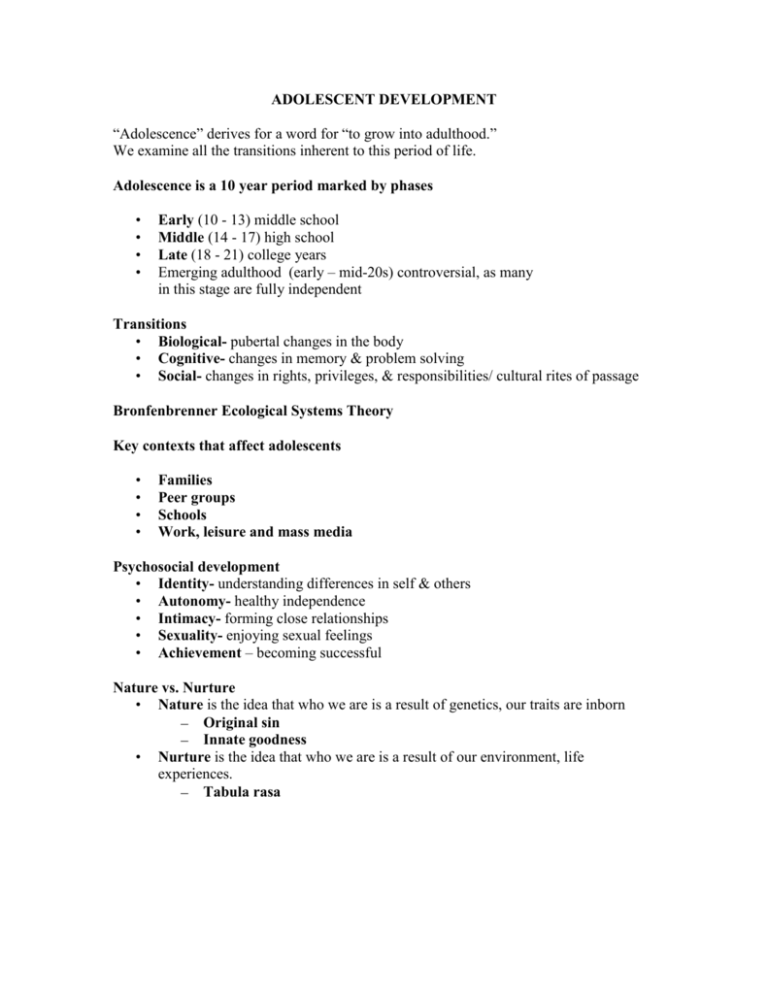
ADOLESCENT DEVELOPMENT “Adolescence” derives for a word for “to grow into adulthood.” We examine all the transitions inherent to this period of life. Adolescence is a 10 year period marked by phases • • • • Early (10 - 13) middle school Middle (14 - 17) high school Late (18 - 21) college years Emerging adulthood (early – mid-20s) controversial, as many in this stage are fully independent Transitions • Biological- pubertal changes in the body • Cognitive- changes in memory & problem solving • Social- changes in rights, privileges, & responsibilities/ cultural rites of passage Bronfenbrenner Ecological Systems Theory Key contexts that affect adolescents • • • • Families Peer groups Schools Work, leisure and mass media Psychosocial development • Identity- understanding differences in self & others • Autonomy- healthy independence • Intimacy- forming close relationships • Sexuality- enjoying sexual feelings • Achievement – becoming successful Nature vs. Nurture • Nature is the idea that who we are is a result of genetics, our traits are inborn – Original sin – Innate goodness • Nurture is the idea that who we are is a result of our environment, life experiences. – Tabula rasa Biosocial- G. Stanley Hall’s Theory of Recapitulation Human development paralleled species development: infancy equates to our primitive past; Adolescence is when we moved into civilization • Development was instinctual, driven by internal forces, rarely affected by the environment • Storm and stress was inevitable (disproven today) • He predated our understanding of brain/ hormonal/ sleep differences due to physiological maturation Organismic Theories • Biological, but take into account environmental influences • Sigmund Freud- psychosexual conflicts come up especially during adolescence because of early experiences • Erik Erikson- psychosocial crises during each stage- identity crisis will determine adult outcome • Jean Piaget- qualitative differences in thinking Learning Theories • Environment is everything • Behaviorism- reinforcement & punishment – B.F. Skinner • Social Learning – modeling & observational learning – Bandura Sociological theories • Group influences: age, gender, ethnicity, SES • Adolescent Marginality- teens experience frustration due to having less influence – SES class makes a difference • Intergenerational Conflict- teen/parent differences in attitudes, beliefs – Modern society changes so rapidly there is an inevitable generation gap (Family Ties sitcom) Historical/Anthropological theories • Adolescence differs in different societies- as a period it is a social invention of the Industrial Revolution • Social invention due to compulsory education/ today the concept of emerging adulthood • Anthropological theories- Margaret Mead/ Ruth Benedict examined how societies’ nature is reflected in adolescent transition – Continuous vs. discontinuous societies Stereotyping Adolescents leads to misunderstanding • Hall’s theories developed from Rousseau- the idea that this period encompasses violent change and adults must tightly control teens. People still believe this in spite of evidence to the contrary. • • • Adolescent generalization gap- we exaggerate any differences we notice, particularly if it is to adult’s advantage (during recession, depicting teens as irresponsible, unemployable) Today’s adolescents are viewed negatively & the stereotypes are emphasized by media Social policy regarding adolescents is determined by what is good for adults!

